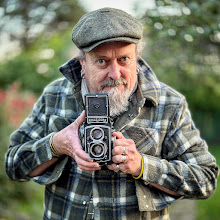
I had a bit of spare time overnight, so read up on the rumour that similar effects to Combine ZM for bodging an increased depth of field can in fact be done in Photoshop CS3.
You need the 'extended version', and you might find this link useful
http://wiki.panotools.org/Image_Stacking
The link above mentions 'Smart Objects", which for my tests were quite the opposite (though I'm sure everybody else will do better).......
The below worked for me and tests so far have proven to work well for for images where you only have two layers (which to be honest is fine for many pictures, more will work I'm sure, but will of course increase the amount of selective layer deleting needed). It also had the advantage in that CS3 lined up slightly misaligned images (ie when a bean bag was used rather than a tripod which can result in rotational errors) somewhat better than Combine ZM. You do have to manually delete the out of focus bits from the top layer using the eraser, this does mean that you don't end up with those odd looking blurred areas where Combine ZM didn't know what to do (Combine ZM does the whole caboodle, but for me has been a little hit and miss depending on shot).
1/ >File
2/ >Scripts
3/ >Load Files into Stack
4/ >Browse and choose images
5/ >Tick the align by comparion check box (not the Smart objects one).
Leave to chunter away for a minute or so, you then get a multi layered file which can be saved as a PSD or layered TIFF.
With the eraser tool (E), ideally with a soft edge delete the out of focus bits from the top layer (this is actually quite quick).
Save as PSD or flatten and save for the web or whatever.
Unlike with Combine ZM you don't lose EXIF, colour space and an end up with an odd 96 dpi screen res (300 would be a better default) which you might need to add again. It also works in 16 bit and straight from the camera RAW files (which 'ZM won't do) which a bonus too.
The shot above taken on a Canon G9, was combined from two shots (one focussed on the foreground and one one the engine) with the camera resting on a bean bag, which in turn was resting on some stock boxes. Previous attempts with Combine ZM created some odd misregistration results on the left hand side, however, using CS3 as above worked perfectly, the stack creation twisting one of the images slightly to solve the previous problem. The whole fiddling about from RAW file selection, through grading and selective deleting of out of focus bits right through to resizing for web took around 10 minutes.

